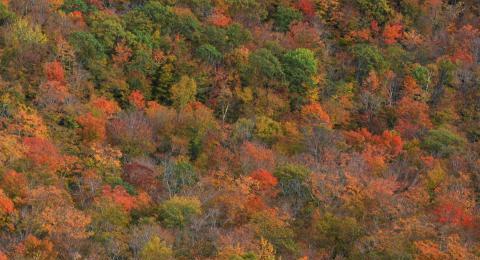
While there has been a regional focus on the lack of and need to create young, early-successional habitat in recent years, there is also recognition and consensus from wildlife biologists about the importance of older, late-successional forests for wildlife. Many of the components of these mature forests - large living and dead trees and downed woody material, for example - are important to a variety of wildlife species.
Most forests in the northeast are currently less than 100 years old, which means that mature forests are somewhat lacking on the landscape. Efforts to restore, maintain, and conserve these late-successional characteristics can help to promote forest diversity as well as wildlife diversity, since ensuring a variety of habitat types are present will help ensure a variety of wildlife on the landscape.
MORE INFORMATION
Read about old-growth forest management in Good Forestry in the Granite State
Detailed recommendations for managing mature forests are available in A Forest Manager's Guide to Restoring Late-Successional Forest Structure from UMass Extension


